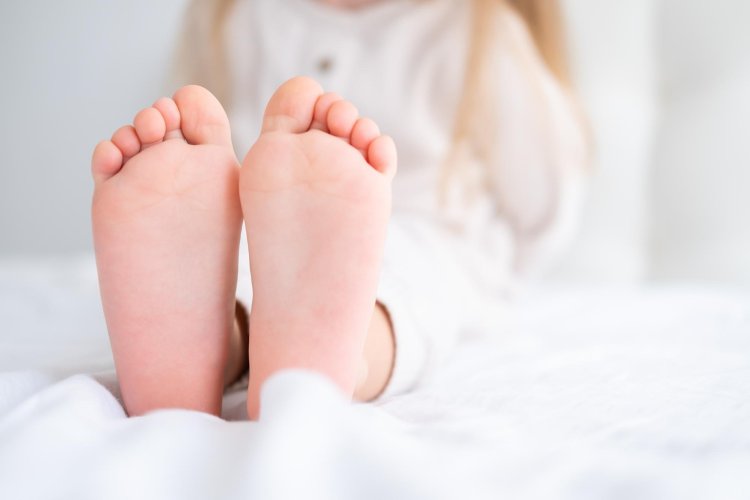Footprints of Change: Transforming Lives with Flat Feet Awareness
Flat feet, also known as fallen arches, is a condition where the arches of the feet are either very low or nonexistent. This means that one or both feet can fully touch the ground in a flat manner.

What Is Flat Feet?
The human foot is a complex structure consisting of 26 different bones held together by 33 joints. The flexibility created by the arches of the foot serves as a spring, helping distribute body weight across the feet and legs. However, in some individuals, this flexibility that serves as the arch is not present. Flat feet, or fallen arches, is the term used when the arch of the foot is lower than normal. Normally, the foot has an arch shape, and the middle part of the inner side of the foot is higher off the ground. People often notice they have flat feet when this elevation is not present. However, the condition can also develop in adulthood. If flat feet are causing pain or other problems, treatment may be necessary.
Symptoms of Flat Feet
Many individuals with flat feet may not experience any symptoms, including pain. However, some types of flat feet can cause significant pain. Flat feet don't always cause symptoms. Sometimes, they can lead to pain in other parts of the body such as the heel or legs. This is because flat feet alter the alignment of the feet and legs and change the way they work together during movement. Problems associated with flat feet include:
- Muscle pain in the foot or leg
- Pain in the arch, ankle, heel, or outside of the foot
- Pain or changes in gait while walking
- Slipping of the toes
- Frequent stumbling or falling in children
Causes of Flat Feet
As children age, arches develop in their feet. These arches can be high or low. Some individuals never develop arches at all, leading to flat feet. Some people may develop flat feet as they age. Flat feet can result from the arches of the feet not developing properly during childhood. Children's feet develop at different rates, with most children developing a more visible arch by around age 10. Wear and tear on the feet can lead to the collapse of the arch, contributing to flat feet as well. Some children experience a condition known as flexible flat feet, where the arch of the foot can be seen when sitting or standing on tiptoes but disappears when standing, resulting in a flat foot. Most children can outgrow flexible flat feet without experiencing significant symptoms. Individuals without flat feet can also develop this condition over time due to wear and tear.
Types of Flat Feet
Flat feet can manifest in different forms depending on factors such as age and underlying causes. The types of flat feet include:
- Flexible Flat Feet
- Rigid Flat Feet
Diagnosis of Flat Feet
Flat feet are typically noticed by the individual feeling discomfort or observing that their feet are flat, but further investigation by a doctor may be necessary to determine the underlying cause. Diagnostic tests may include a physical examination to assess the structure of the feet, as well as imaging tests. Individuals experiencing significant foot pain may undergo imaging tests to help identify the underlying cause.
Treatment of Flat Feet
Many individuals with flat feet do not have significant problems and may not require treatment. However, in children, the initial step in treating treatable flat feet is monitoring. Since children may not notice flat feet themselves, parents and caregivers should monitor them for proper arch development at an early age. If any abnormalities are noticed, children should be examined by a doctor. Pediatricians can conduct clinical examinations and X-rays to determine the type and cause of most flat foot deformities.
When adults experience foot pain, stiffness, or other problems, doctors may recommend non-surgical treatments. Non-surgical treatments prescribed to alleviate foot pain include nonsteroidal anti-inflammatory drugs, rest, and ice therapy. Physical therapies such as stretching and strengthening tendons and muscles, improving flexibility, and mobility may be applied. Sometimes, specially designed arch supports shaped according to the contours of the feet, known as orthotics, may be advised. Devices such as medical foot or leg braces and custom-made shoes are preferred options to ensure that flat feet do not adversely affect a person's quality of life.
#FlatFeet #FallenArches #FootPain #ArchSupport #FootDeformity #Podiatry #Orthopedics #FootAnatomy
Disclaimer:
The information provided in this article is for educational purposes only and should not be considered medical advice. If you have any health concerns or are experiencing symptoms, it is important to consult with a healthcare professional, such as a doctor or clinic, for proper diagnosis and treatment. Always seek the advice of your doctor or other qualified health provider with any questions you may have regarding a medical condition. Do not disregard professional medical advice or delay in seeking it because of something you have read in this article.
What's Your Reaction?





















